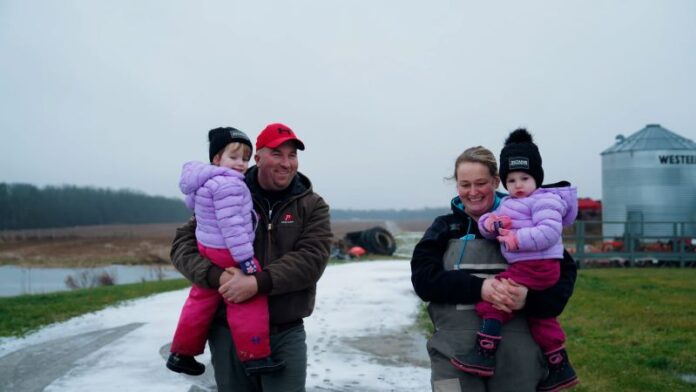by Drew Spoelstra, President, OFA
Much is always made of the high average age of Canadian farmers, but there’s a quiet shift happening in agriculture that is changing the face of our industry. Quite literally, farming is in transition – and I’m one of many farmers right in the middle of it. Family farms are still a huge part of what Ontario agriculture looks like, but like so many Canadians, a growing number of farmers are facing retirement. That means that they’re now following succession plans to turn the management and ownership of their farm businesses over to a new generation.
That’s exactly the situation that I find myself in. I’m 37 and I’ve been involved in our family dairy and grain farm my entire life. My wife and I and my parents have recently worked through our farm business transition plans as we look to set our family farm up for a better future.
Farm succession is an onerous and challenging task, but one that is absolutely necessary for the sustainability of farm businesses as many farmers enter the later stages of their careers. With a plan in place, we can now make investments – like a state-of-the-art dairy barn – that we hope will help make it possible for our young daughters to farm when they grow up if that’s what they’d like to do.
My family is also reflective of another new reality for many farmers and that’s farming close to an urban area. Our farm is near the town of Binbrook in a rural part of the City of Hamilton and while that brings opportunities, it also often means that the needs of farm businesses get lost in the larger urban issues that dominate the agendas of local decision-makers.
In addition to farming, I’m also heavily involved with the Ontario Federation of Agriculture (OFA). I believe it’s important to give back to the industry that sustains us, and late last fall, I became the youngest OFA president in the organization’s history.
What you see in me is a lot of what you’ll see across agriculture in Ontario now – older farmers following succession plans and a next generation stepping up with visions for the future of their farm businesses and in some cases, also the broader farming sector.
You’ll also see that reflected in a growing number of my fellow OFA board members and in the leadership of other agricultural organizations where a new, young generation of farmers is starting to take an active role in representing their industry and helping to shape its future for the decades to come.
Agriculture’s next generation is bringing fresh ideas and raising different perspectives on everything from sustainability and climate change to public trust, mental health and wellness and more. We look forward with optimism and while we are making investments in the future of our businesses and our industry, it’s a road we can’t go alone. We need to know that Canadians see benefit in strong farms and rural communities, value a local food supply system that brings the sustainability and environmental stewardship benefits that farms provide, and support us by buying local.
And to meet the ambitious goals of the Province’s Grow Ontario strategy and to protect our future ability to continue to produce as much food, fuel and fibre right here at home, we also need government to step forward and support our sector. That support can come in various ways, whether through sound, forward-thinking policies and legislation or with financial investments into much-needed infrastructure, resources and programming that will support farming’s long-term sustainability and profitability. We’ve brought some of these ideas directly to government by participating in the provincial budget consultations that are currently happening across Ontario: Supporting home grown food production by encouraging government and public sector agencies to buy more local food and beverages, increasing funding to the provincial Risk Management Program that helps farmers manage uncertainty, and addressing the agri-food sector’s chronic labour shortages. Modernizing farm tax programs and development charges to support continued farm business transition, growth and expansion. Investing in rural and social infrastructure, such as rural roads and bridges, affordable energy and high-speed broadband, and education, healthcare and community hubs for rural communities. Improving soil health and water stewardship by continuing funding for the Ontario Agricultural Soil Health and Conservation Strategy and the Ontario Drinking Water Stewardship Program. Strengthening Ontario’s veterinary sector by investigating additional short and long-term strategies to help solve the lack of veterinary capacity in Ontario.
Agriculture has a long, proud history in Ontario and I’m excited to be part of shaping its next chapters.








